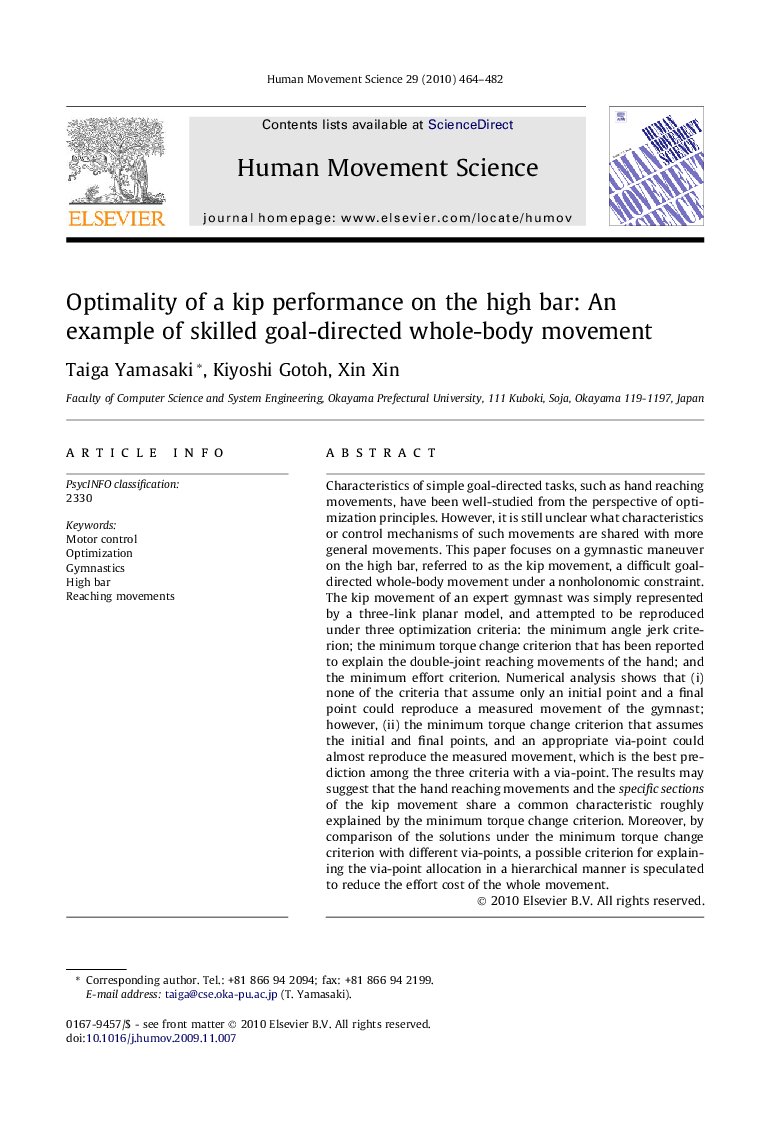| Article ID | Journal | Published Year | Pages | File Type |
|---|---|---|---|---|
| 928688 | Human Movement Science | 2010 | 19 Pages |
Characteristics of simple goal-directed tasks, such as hand reaching movements, have been well-studied from the perspective of optimization principles. However, it is still unclear what characteristics or control mechanisms of such movements are shared with more general movements. This paper focuses on a gymnastic maneuver on the high bar, referred to as the kip movement, a difficult goal-directed whole-body movement under a nonholonomic constraint. The kip movement of an expert gymnast was simply represented by a three-link planar model, and attempted to be reproduced under three optimization criteria: the minimum angle jerk criterion; the minimum torque change criterion that has been reported to explain the double-joint reaching movements of the hand; and the minimum effort criterion. Numerical analysis shows that (i) none of the criteria that assume only an initial point and a final point could reproduce a measured movement of the gymnast; however, (ii) the minimum torque change criterion that assumes the initial and final points, and an appropriate via-point could almost reproduce the measured movement, which is the best prediction among the three criteria with a via-point. The results may suggest that the hand reaching movements and the specific sections of the kip movement share a common characteristic roughly explained by the minimum torque change criterion. Moreover, by comparison of the solutions under the minimum torque change criterion with different via-points, a possible criterion for explaining the via-point allocation in a hierarchical manner is speculated to reduce the effort cost of the whole movement.
